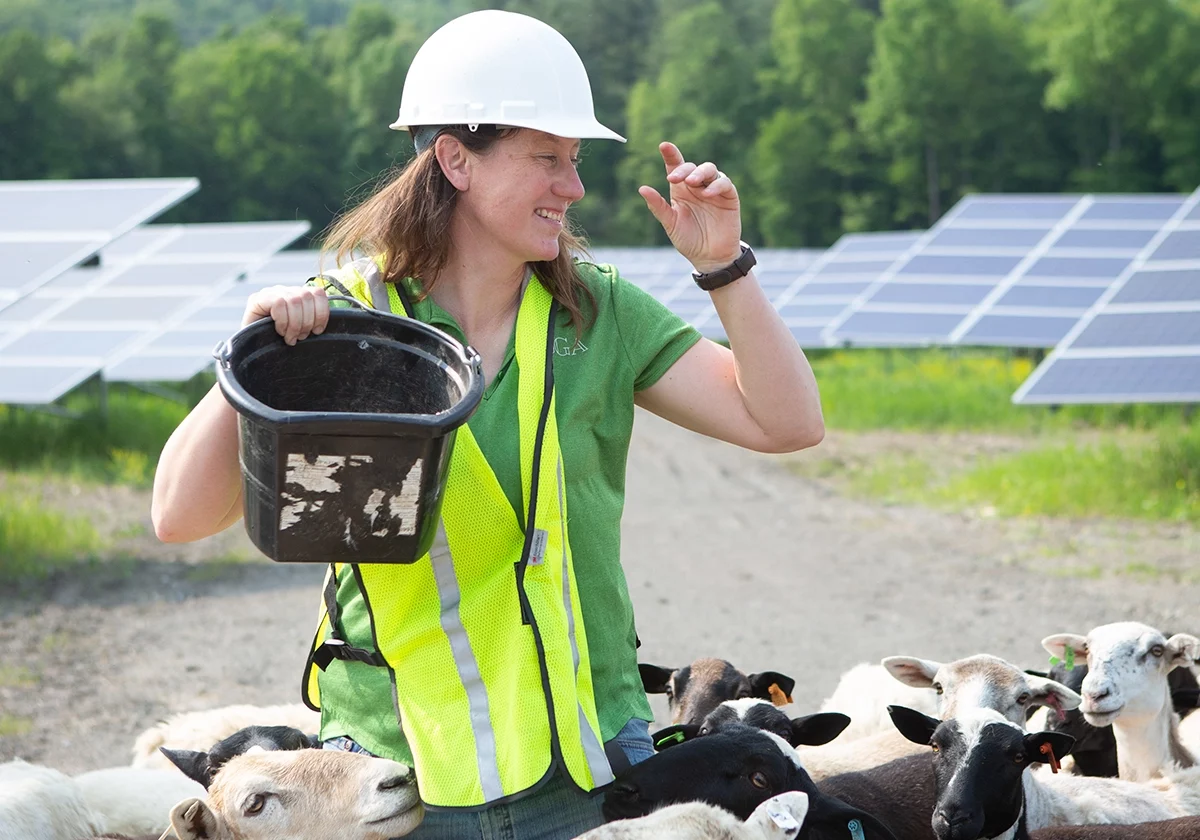
ASGA Call 69 – Turning Sheep Green: Solar Grazing’s Long-Term Emissions and Environmental Benefits
August 2, 2023 @ 6:00 pm – 7:00 pm EDT
What are the climate and environmental impacts of adding sheep to solar sites? How does solar grazing compare to conventional solar sites and to conventional sheep production?
The potential impact solar grazing may have on reducing emissions is an important growth area for the future of the industry.
For this month’s webinar, we’re introducing some exciting research on the environmental benefits of solar grazing and putting it in conversation with research on the environmental impact of conventional sheep production.
We’ve invited Robert Handler and Joshua Pierce to discuss their exciting new paper analyzing the benefits of grazing sheep on solar sites over a 30-year life cycle. To bring more context to the discussion, we’ve invited Erin Recktenwald from Michigan State University to discuss her research estimating the greenhouse gas emissions from different types of sheep production.
The discussion will help give us a sense of the overall climate benefits of solar grazing, and allow us to compare solar grazing’s impacts to conventional sheep grazing.

About Robert and Joshua’s Life Cycle Analysis of Solar Grazing:
Taking the long view, Robert and Joshua’s research shows that solar grazing is twice as land-use efficient than producing sheep and operating solar sites separately, and reduces emissions. Their findings argue that dual-use systems reduce the environmental impacts of producing electricity and food, and grazing solar sites should be encouraged.
About Erin’s research into life-cycle emissions from sheep production:
The U.S. sheep industry is uniquely diverse, with a range of productivity and management intensity from housed, highly prolific flocks to flocks with lower productivity in extensive grazing systems. The adoption of different management practices are often regional, but there is also a large range of management systems within a region related to many factors including land value, degree of infrastructure investment, size of farm and market focus. There are also clear regional differences based on climate zone and associated vegetation.
The main objective of this study was to develop a cradle-to-farm gate life cycle analysis for estimating greenhouse gas emissions from four types of sheep production systems typically found in the U.S., ranging from highly productive, intensive management to less productive, more extensive management practices. Another objective was to determine the factors that contribute to an operation’s emissions, such as ewe productivity, manure management, fuel usage, feed purchasing, etc. in an effort to identify potential mitigation targets. The goal of this study was not to find an optimal management system within the U.S. that produced the least emissions, but to determine the variability among and within operation types and determine their sources of GHG to identify potential mitigation strategies.


